2019 BMW F 750 GS Review
Motorcycle Test by Vicko
Whilst their model naming conventions might defy logic, begging the question how/why is a 750 actually an 850?, the BMW engineering boffins sure know what they’re doing. It’s a seriously thorough package when loaded to the gills like this F 750 GS was when I picked it up.
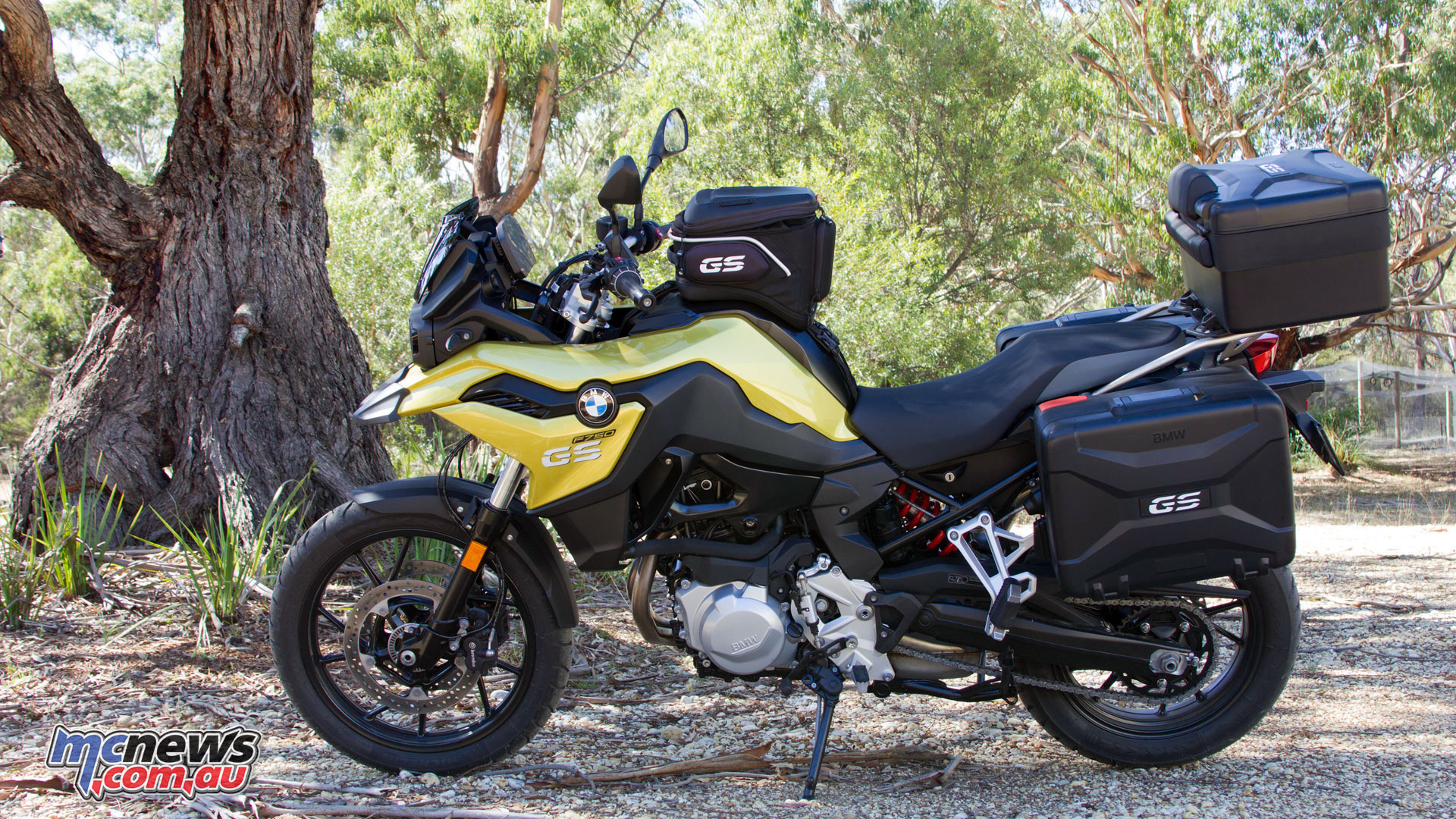
They know how to do dealerships too. BMW Southbank isn’t such a horrible place to do some casual window shopping before picking up the press bike. Mental note – step away from the second hand S 1000 RR HP4 Wayno. And the R nineT racer… oof.
Back to the earlier point – a 750 not being a 750. The F 750-850 GS family is a little confusing so let’s do a quick high level recap of the specs to focus on what is what:
- F 750 GS: 853cc, 77hp, 83Nm, 224kg, 15L tank, 815mm seat, suspension travel 151mm F / 177mm R (this is what we’re looking at here).
- F 850 GS: 853cc, 93hp, 92Nm, 229kg, 15L tank, 860mm seat, Suspension travel 230mm F / 215mm R (I’ll get to this one soon).
- F 780 GS Adventure: 853cc, 90hp, 86Nm, 244kg, 23L tank, 875mm seat, Suspension travel 230mm F / 215mm R (Trev’s done a great writeup on this one here).
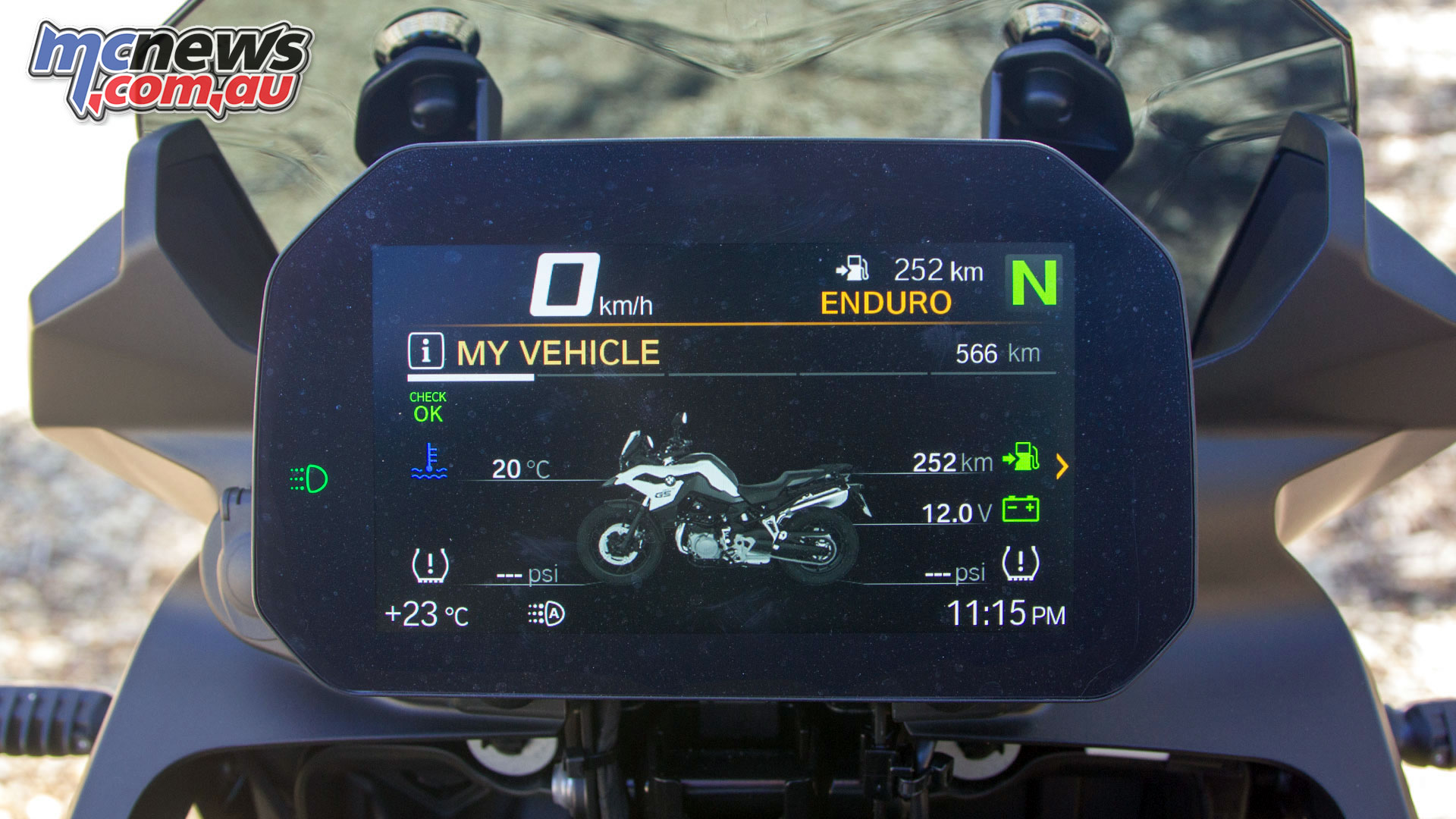
So today we’re talking about the more accessible (power-wise), lower, more road oriented of the trio. The quick run through of the dash and controls was a bit of an eye opener too. They’ve gone to town on these as far as spec options go. This one didn’t just have some fruit on it – it was the full fruit salad:
- Keyless ignition (push button unlock/start on proximity)
- 5 inch TFT screen with ‘multi-controller’ scroll wheel
- Four ride modes (Rain, Road, Dynamic and Enduro),
- Traction control (disengageable)
- ABS (disengageable)
- Electronically adjustable suspension
- Cruise control
- Tyre Pressure monitoring
- Integrated navigator, music and phone controls (via phone app)
- Heated grips (three modes)
- Quickshifter

The bike I was picking up also had the very tidy Akrapovic muffler and the full suite of luggage, which is stunning by the way, via the Touring Luggage Pack (which also includes the tank bag). Solid as a rock, on and off the bike in seconds. Side panniers expand out with the flick of a lever. The top box even has a nicely integrated back-pad for the pillion.
It’s dripping with goodness and makes my personal luggage look positively low rent. Very nice kit. The Akra muffler and luggage add-ons will set you back around 4 grand on top of the base price but having seen and used them I’d be hard pressed not to tick those boxes.
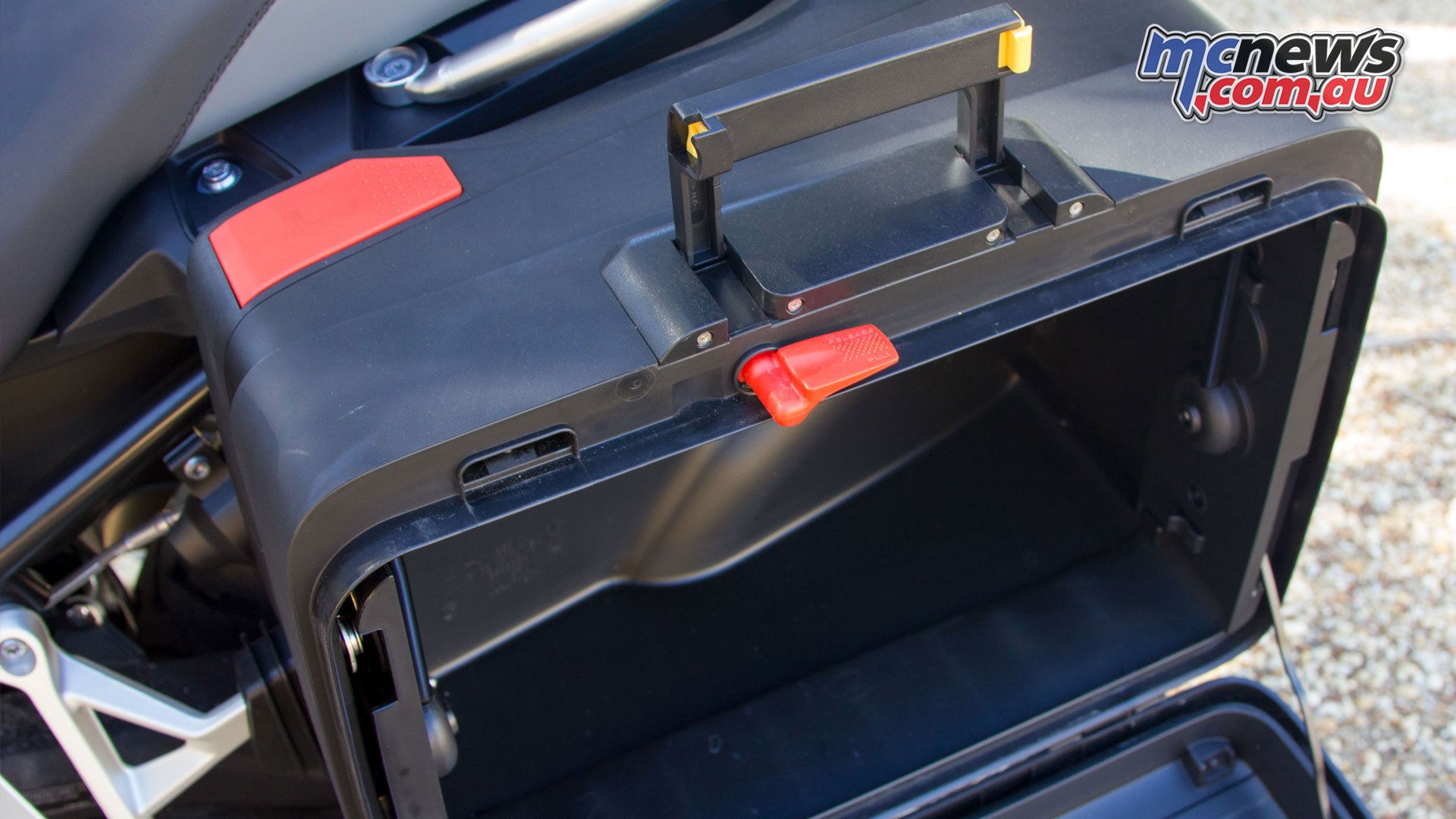
Other than a playbook full of new technology options and having had a catalogue full of accessories thrown at it, the biggest news is the new engine. I’ll admit I’ve previously not really been a massive fan of the F series – the old parallel didn’t really blow my hair back. But this new 850cc version (in this F 750 GS…) is a much nicer powerplant.
It revs freely with a surprisingly rewarding airbox growl. Power curve feels as flat as a pancake and the bike can either be happily quick-shifted at around 4-5 thousand rpm under full throttle (which makes the most of the airbox growl) or wound right out. Peak torque (83Nm) is at 6000rpm and peak power (77hp) arrives at 7500rpm so shifting around 8 thousand just before the 8500 redline makes solid progress.
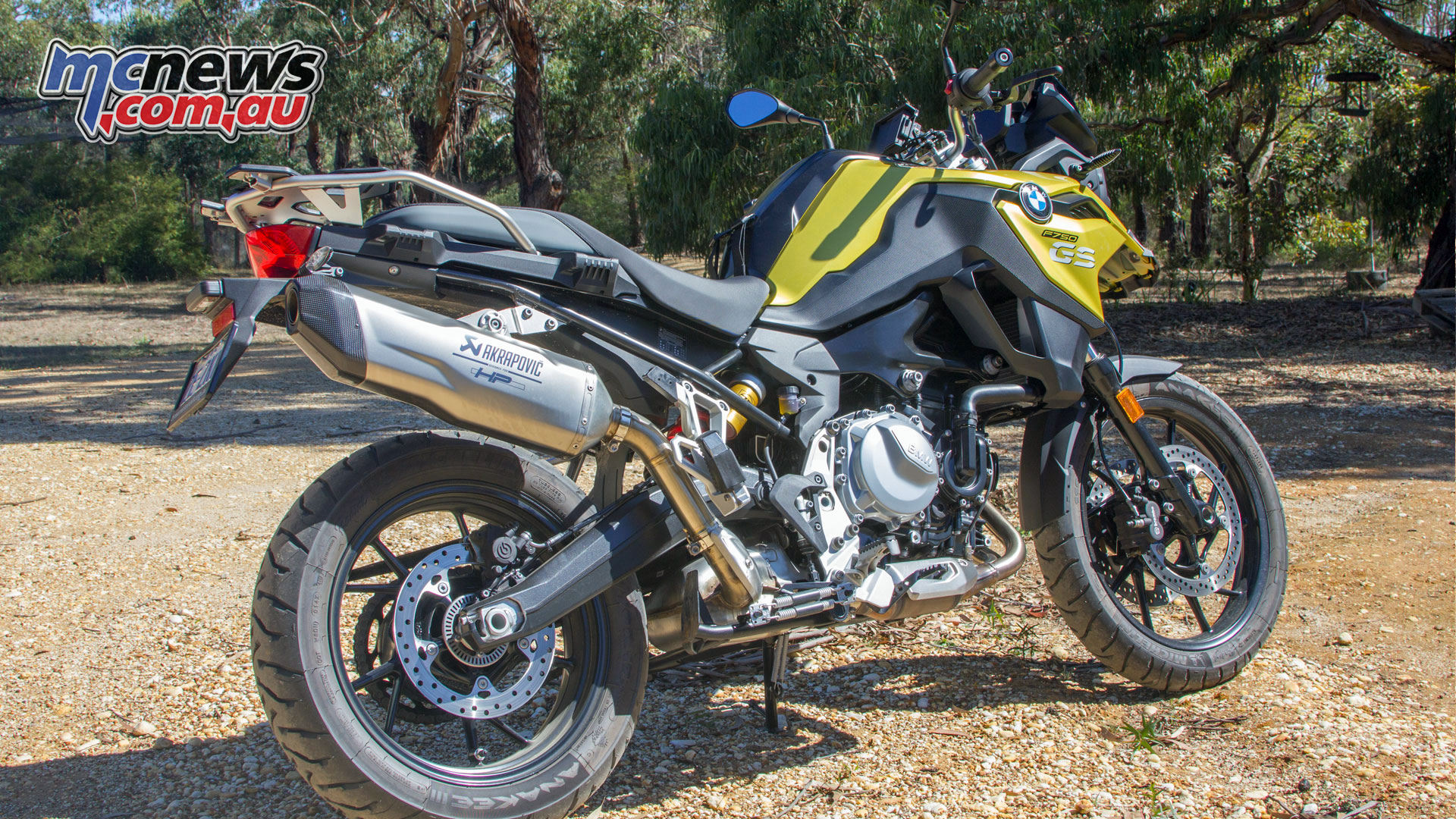
The lovely carbon tipped Akra muffler liberates a little more mid-range torque over the stock muffler as well as a couple of decibels, but is still very much on the polite side of loud. At idle there’s a bit of mechanical noise from the engine – not bad noise mind you, but it’s not a quiet engine at idle. And it does vibe a little.
If it was italian it would be called character. What’s the German word for character…? Regardless, once on the move the vibes smooth out, the mechanical noise gives way to that nice airbox growl which unfortunately overpowers the exhaust note. Then by the time the airbox growl drops away the wind noise takes over, so unfortunately you never really get to hear as much exhaust note as you’d like. Less baffling please.
The quick shifter works nicely in both directions, most happily doing full throttle upshifts and will downshift happily most times if you give it a little blip to take some reverse load off the box while you’re doing it. I still found myself using a little clutch on a lot of downshifts depending on throttle input to help smooth it out further – as at part throttle it’s a bit hit and miss (which you get a fair amount of in traffic and when just cruising around).
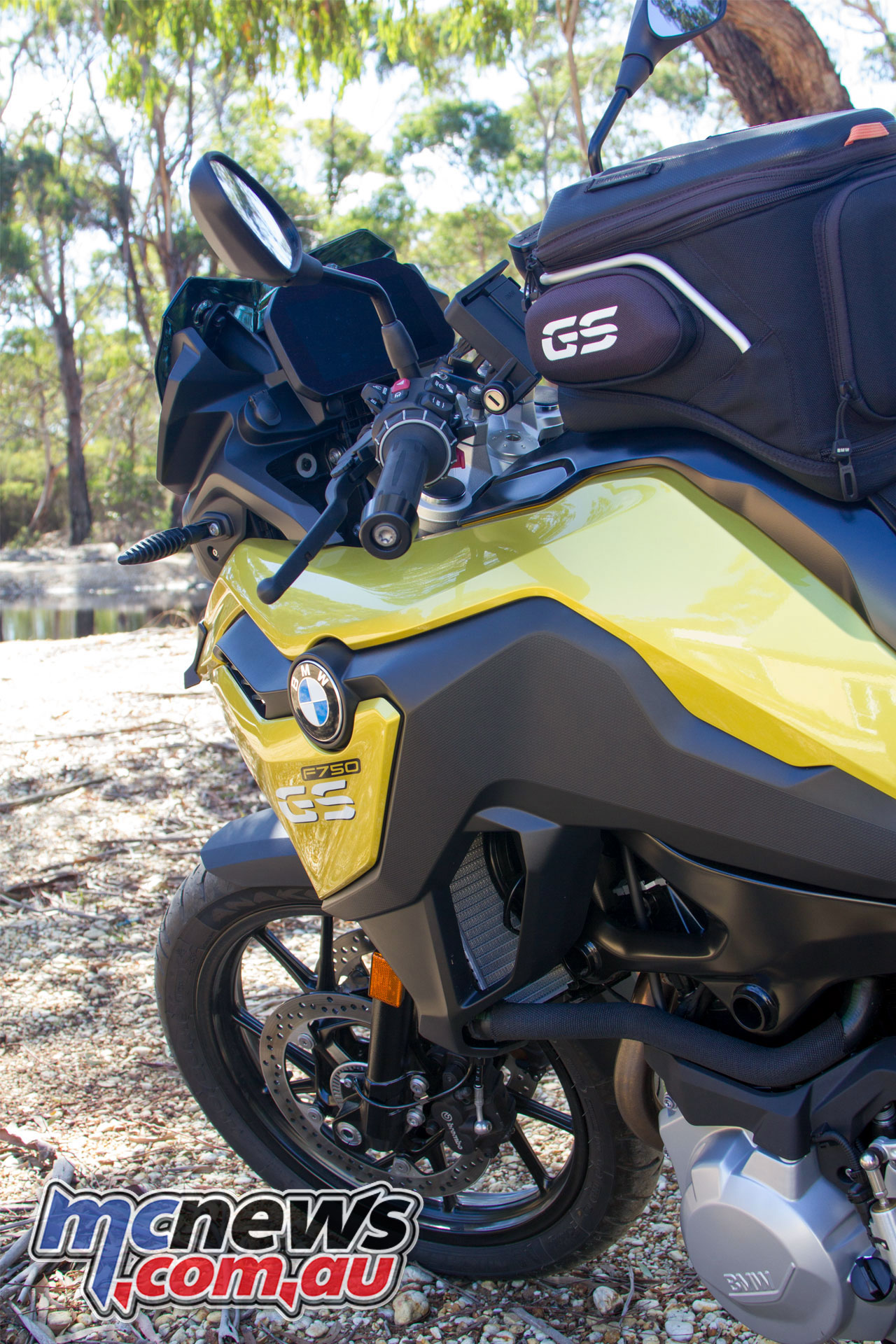
Needs to be said that when using a bit of clutch there’s a little mechanical feedback on the lever that feels odd as the auto slip mechanism does its thing. I do wonder if what is a relatively entry level adventure style bike needs a quick shifter at all, I actually think it’d be better without it – but it’s not me plonking down the folded.
Throttle feel is nice on the go, with only the occasional, very minor injection hunt when transitioning from off throttle to ‘just on’. It’s only really noticeable in traffic, when you’re riding to match someone else’s pace and not flowing along at your own. Out on the road or punting harder it disappears.
I think there’s also some tweaking to do on the anti-stall mapping down low as I felt that kick in a bit weirdly a couple of times too – and then I managed to stall it more than once while maneuvering around the boom gates at the work car park. I’d imagine both of these are only a mapping software update away from being dealt with and they are nothing you can’t adjust your throttle inputs to ride around. In fact these minor foibles with the flexibility of the powerplant might actually be from the mapping not being quite matched to the optional Akrapovic muffler that was fitted to this test bike.
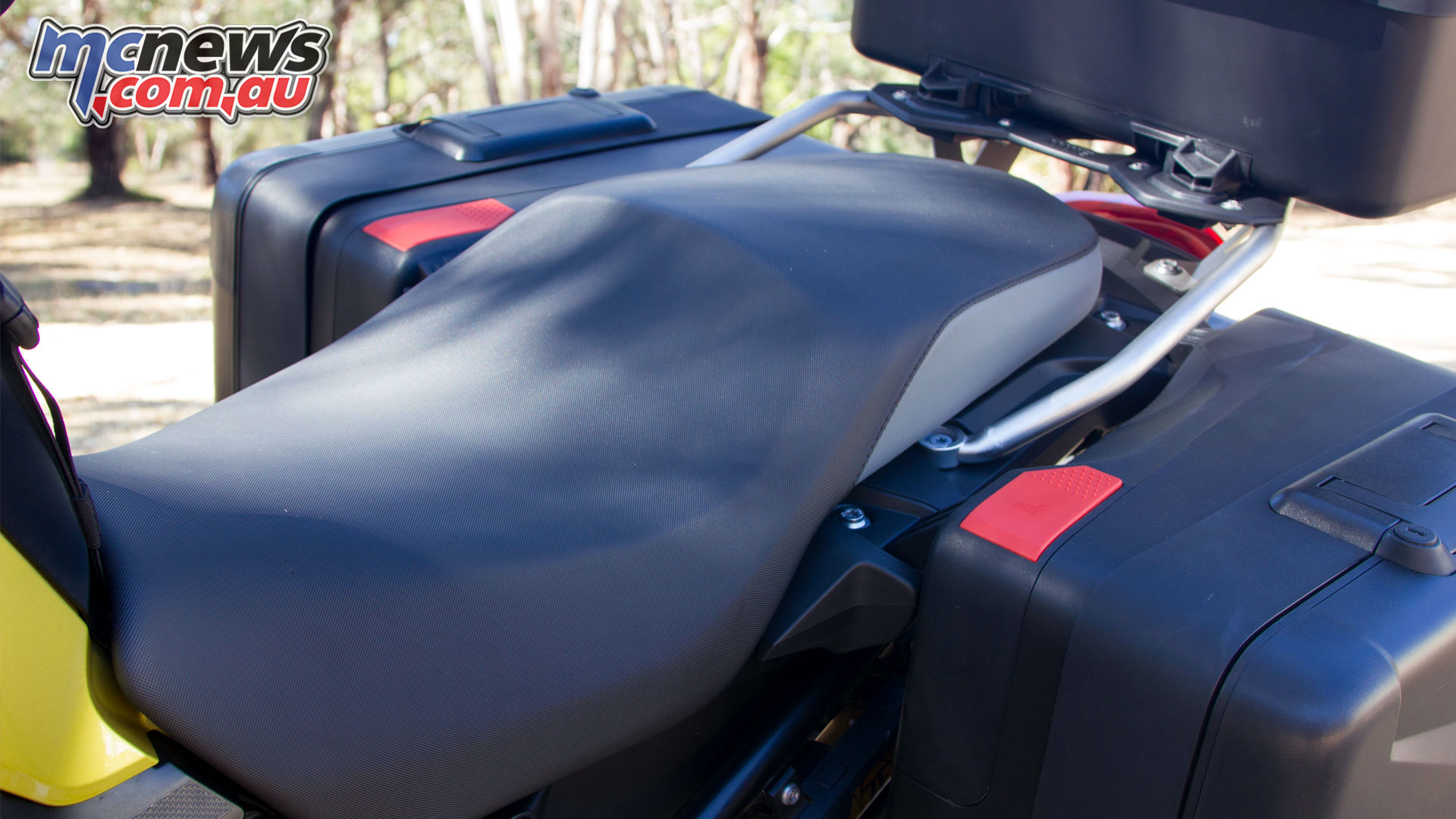
Overall it’s nicely proportioned and roomy for my 6ft frame. Really nice upright riding position with a generously comfortable, sculpted seat. Surprisingly comfortable actually. Whoever designed the curve of the seat nailed it. For whatever reason I reckon most sculpted seats seem to miss the mark, but this one is spot on and rises up behind your butt offering really good support.
Comfy cruising along the highway, yet sculpted enough to let you shift around and forward when firing along your favourite set of twisties. But if I’m being picky, and I am, I’d probably like a little taller screen from the factory for a little better wind protection on a bike like this.
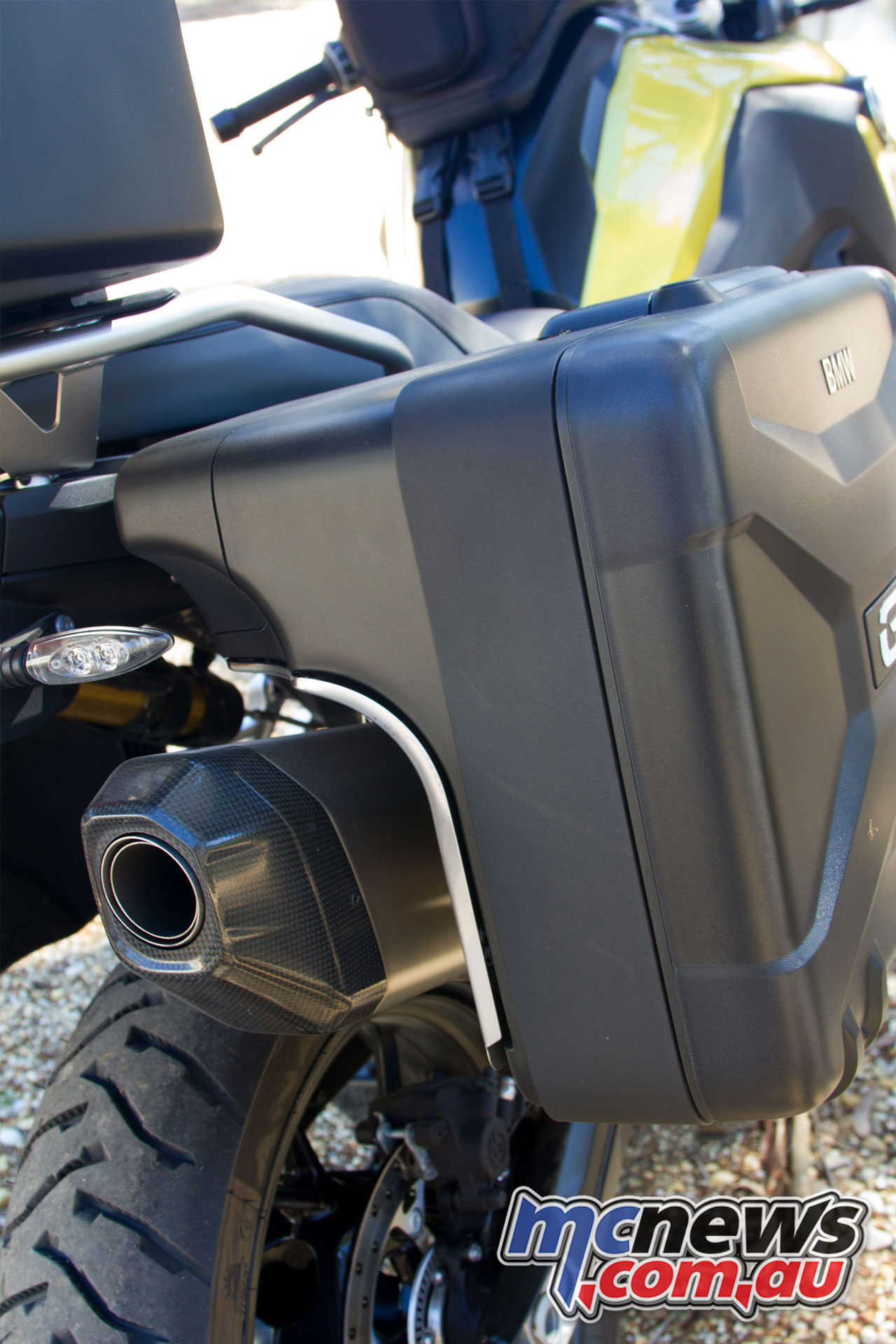
In the twisties, it’s a nice thing to punt along. Really, really nice chassis balance and dynamics. You feel comfortable on it straight away, confident enough to throw it fully on its side and test just how good the traction control is. And if you’re wondering, it’s good. I like it in enduro mode on smoother gravel roads in particular.
It lets you dial up a nice amount of wheel spin without getting away from you. When you combine the airbox growl at lower revs with easy gravel slides it certainly combines for a fun ride.
However to be fair – it’s the more soft roader of the family really and set-up for better road manners than off-road. It reinforced that by tying itself in knots on my admittedly horribly corrugated gravel road – the same road that my flogged out Tiger 800XC handles far better. For more serious off roaders, you’d go with the 850 or 850 Adventure being more, and more capable again, off-road.
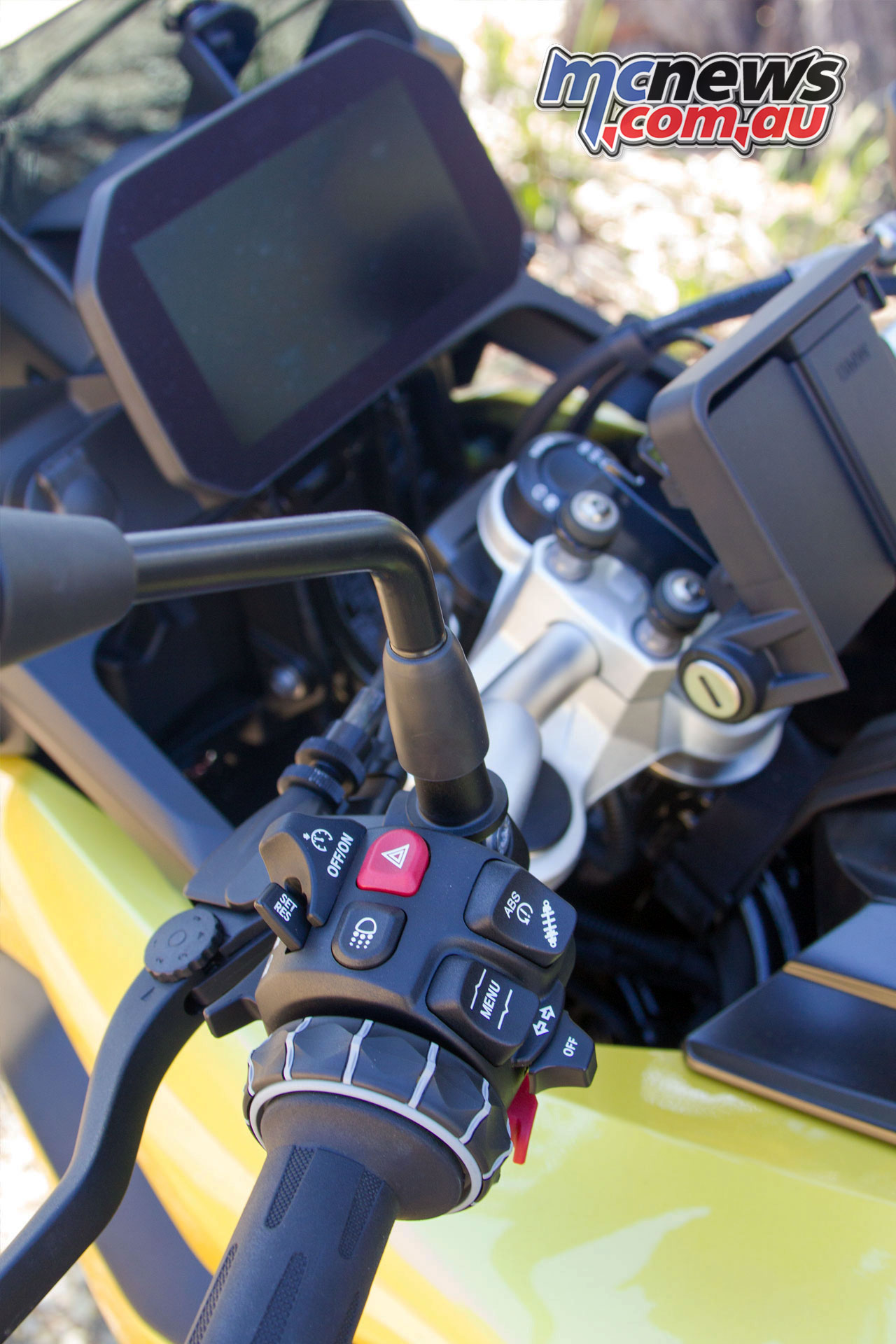
So three variants of the same bike. I do wonder if punters will be paralysed for choice? Certainly spoilt for choice.
While the shorter of the three suspension choices might not be up to the task for really serious off road stuff, it’s more than up to it for sealed roads and decent gravel tracks. Lashings of feedback from both ends and it soaks up the everyday ripples and bumps on our average roads very nicely. That lower seat height helps make it a little easier for low speed maneuvering in traffic too and hides its 240 odd kilos well. I was surprised when I read that in the specs, feels substantially lighter on the move.
Another party trick up its sleeve is the electronically adjustable suspension. A quick dab of the controls raises or drops the ride height through three settings in a matter of a few seconds. I do think BMW would do well to swap the positions of the ride mode control (right hand side) and the suspension height control (left hand side). You’d be more likely to use the ride mode swapping on the go than the others, so put it on the left where it’s easier.
On the right side you need to shift your throttle hand, which… I’d personally prefer not to. But I do need to pat the lads on the back for allowing riders to disable the traction control and ABS while on the go. It’s not that hard is it. Why doesn’t everyone else do it?
That TFT also has a brilliant display of your bike status while on the go – and while I’d previously have never ticked the ‘tyre pressure monitoring’ option, on the second week it came in handy and could have paid for itself in one go. I’d managed to pickup a massive tech screw in the rear tyre and the warning system alerted me to the fact that my pressures were dropping well before I’d have noticed.
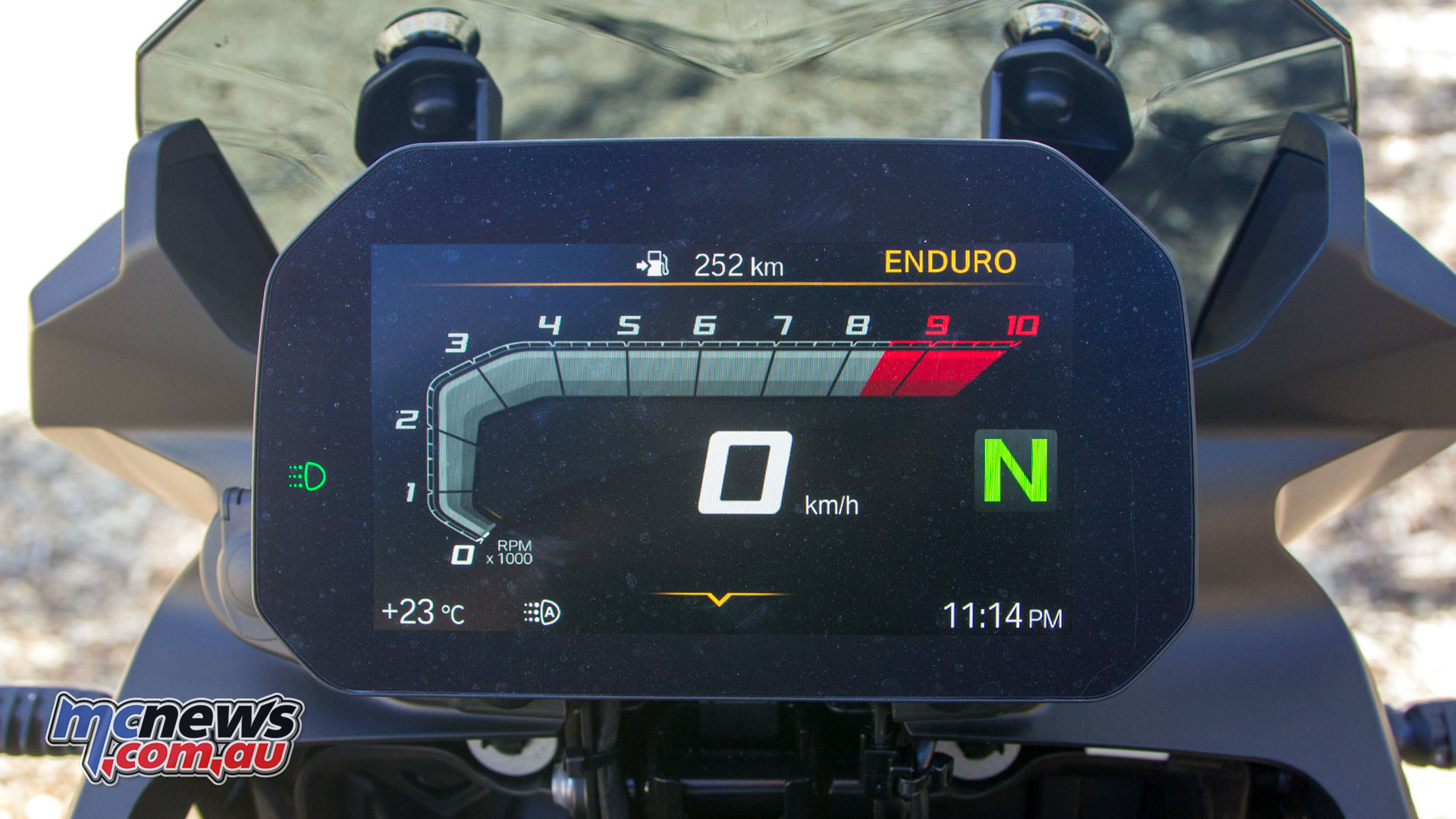
The warning kicked in when the pressures dropped from 43 pounds to about 38 pounds. After keeping an eye on it for a few kays to see how fast the pressure was dropping, I managed to servo hop my way to the dealer, topping up pressures before it dropped below the point at which you’d start to damage the tyre further.
Ultimately in this case it needed a new hoop as the tek-screw had damaged the inside of the sidewall so the lads couldn’t risk it, but it could have saved me 300 bucks on a new tyre. AND it alerted me early enough that I wasn’t left stranded with a dead flat tyre and no options.
All in all only minor grievances really. The position of a button? And too much stuff on a dash to play with? The world’s gone mad. It’s a bloody good bike that you’ll feel at home on straight away. If you want to do some decent miles including a bit of gravel roading, this has plenty going for it – and good service intervals too if you clock up the kays like I do.
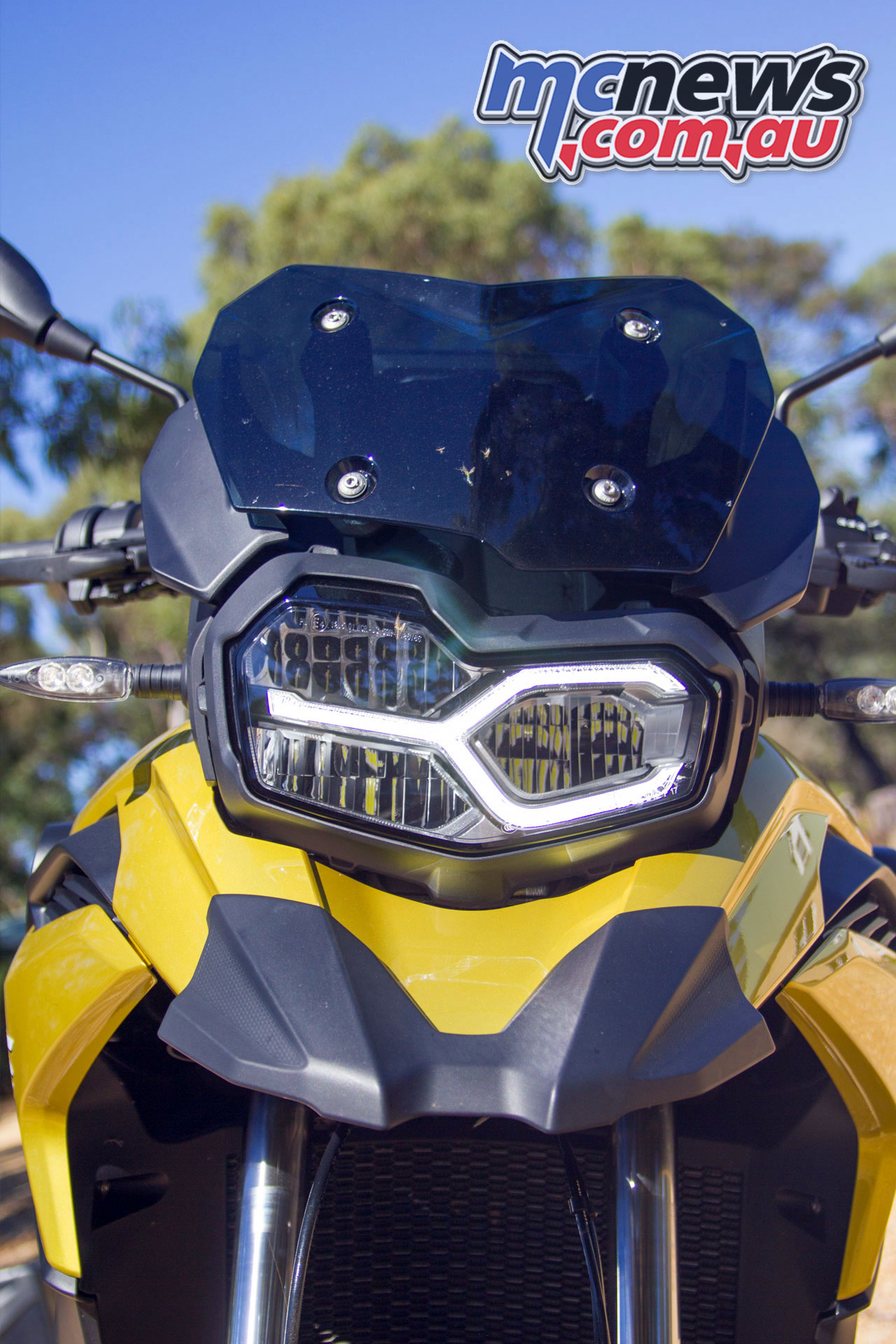
| Why I like it: | |
| Nice roomy, relaxed, upright riding position, terrific seat | |
| Really nice chassis balance and dynamics | |
| Techno-wizardy tour de force – see the list above! | |
| Being able to flick off the TC and ABS while rolling – yay! | |
| Surprisingly nice intake growl | |
| Enviable hard luggage options (touring luggage pack) | |
| 20,000km service intervals | |
| I’d like it even more if: | |
| That minor injection mapping hiccup was tweaked | |
| The ride mode and suspension control positions were swapped | |
| The muffler could liberate a little more growl | |
| The front screen offered a little more wind protection | |
| SPECIFICATIONS | |
| 2019 BMW F 750 GS | |
| Engine | |
| Type | Water-cooled 4-stroke in-line two-cylinder engine, four valves per cylinder, two overhead camshafts, dry sump lubrication |
| Bore / stroke | 84 mm x 77 mm |
| Capacity | 853 cc |
| Rated output | 57 kW (77 hp) at 7,500 rpm OE output reduction to 35 kW (48 hp) at 6,500 rpm |
| Max. torque | 83 Nm at 6,000 rpm |
| OE output reduction: 63 Nm at 4,500 rpm | OE output reduction: 63 Nm at 4,500 rpm |
| Compression ratio | 12.7 : 1 |
| Mixture control | Electronic injection |
| Emission control | Closed-loop 3-way catalytic converter, emission standard EU-4 |
| Performance / Fuel Consumption | |
| Maximum speed | 190 km/h |
| Acceleration 0-100 km/h | 4.1 |
| Fuel consumption per 100 km based on WMTC | 4.1 L |
| Fuel type | Unleaded regular, minimum octane number 91 (RON) |
| Electrical System | |
| Alternator | Permanent magnetic alternator 416 W (nominal power) |
| Battery | 12 V / 10 Ah, maintenance-free |
| Power Transmission | |
| Clutch | Multiple-disc wet clutch (anti hopping), mechanically operated |
| Gearbox | Constant mesh 6-speed gearbox integrated in crankcase |
| Primary Drive | 1.821 |
| I | 2.833 |
| II | 2.067 |
| III | 1.600 |
| IV | 1.308 |
| V | 1.103 |
| VI | 0.968 |
| Secondary transmission | 2.588 |
| Drive | Endless O-ring chain with shock damping in rear wheel hub |
| Chassis / Brakes | |
| Frame | Bridge-type frame, steel shell construction |
| Front wheel location / suspension | Telescopic fork, Ø 41 mm |
| Rear wheel location / suspension | Cast aluminium dual swing arm, central spring strut, spring pre-load hydraulically adjustable, rebound damping adjustable |
| Suspension travel, front / rear | 151 mm / 177 mm (OE: suspension lowering kit 131 mm / 157 mm) |
| Wheelbase | 1,559 mm |
| Castor | 104.5 mm |
| Steering head angle | 63° |
| Wheels | Cast aluminium wheels |
| Rim, front | 2.50 x 19″ |
| Rim, rear | 4.25 x 17″ |
| Tyre, front | 110/80 R19 |
| Tyre, rear | 150/70 R17 |
| Brake, front | Dual disc brake, floating brake discs, Ø 305 mm, double-piston floating caliper |
| Brake, rear | Single disc brake, Ø 265 mm, single-piston floating caliper |
| ABS | BMW Motorrad ABS (disengageable) |
| Dimensions / Weights | |
| Seat height | 815 mm (OE suspension lowering kit: 770 mm, OE low seat: 790 mm, OE comfort seat: 830 mm) |
| Inner leg curve | 1,830 mm (OE suspension lowering kit: 1,750 mm, OE low seat: 1,790 mm, OE comfort seat: 1,870 mm) |
| Usable tank volume | 15 L |
| Reserve | Approx. 3.5 L |
| Length | 2,255 mm |
| Height (excl. mirrors) | 1,225 mm |
| Width (incl. mirrors) | 922 mm |
| Unladen weight, road ready, fully fuelled 1) | 224 kg 1) |
| Permitted total weight | 440 kg |
| Payload (with standard equipment) | 216 kg |























